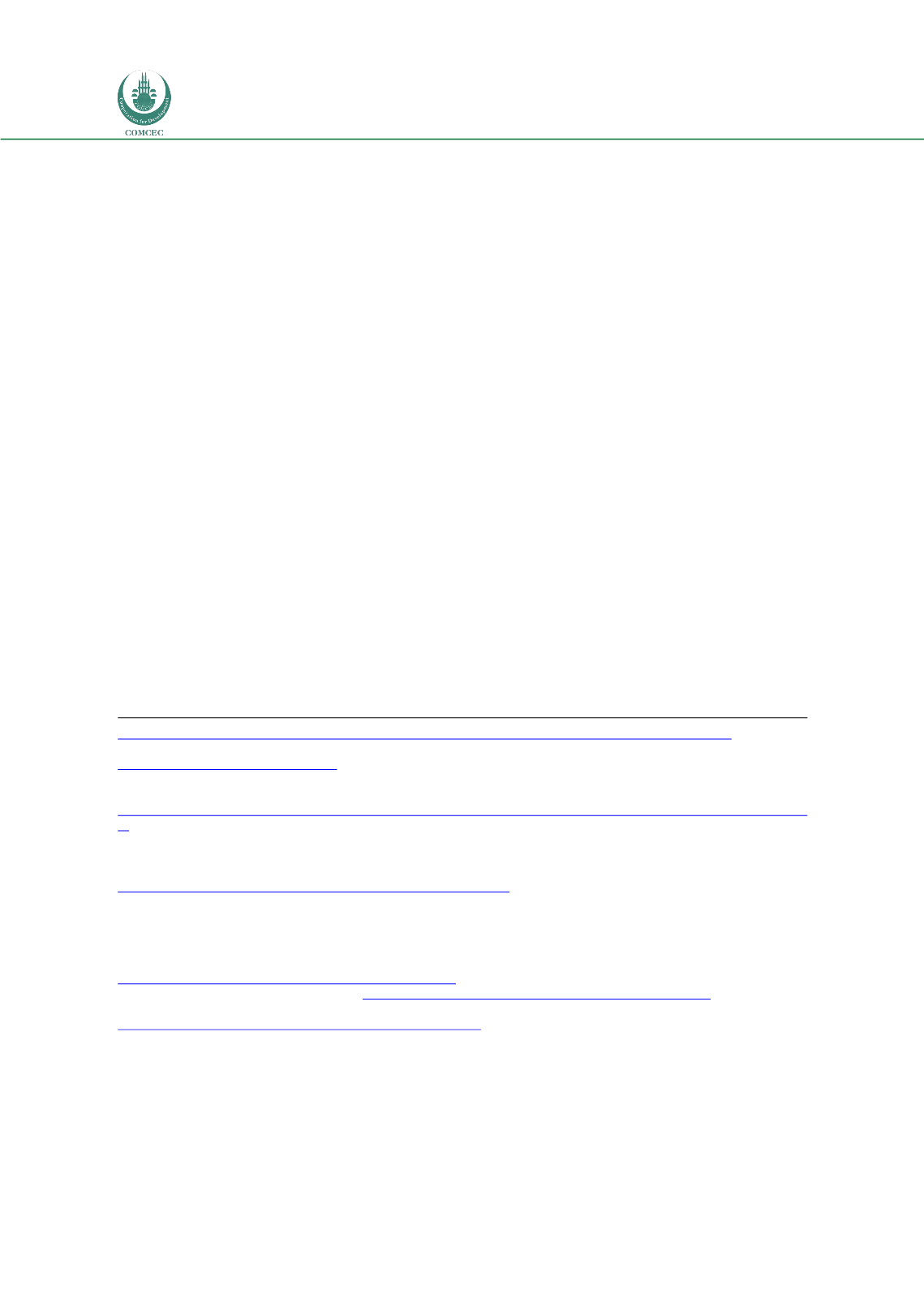

Forced Migration in the OIC Member Countries:
Policy Framework Adopted by Host Countries
64
become refugees sur place – immigrating for economic or other reasons, and later acquiring a
well-founded fear of persecution if they should return home.
283
In FY2014, 23,533 persons
were granted asylum in total – with Egypt (2,879 total asylees), Syria (932 asylees) and Iran
(636 asylees) as the top OIC countries of origin.
284
While the U.S. government does not report
total asylum applications per fiscal year, UNHCR reported that the United States saw 96,065
total asylum applications in calendar year 2014 and 135,866 applications in 2015.
285
In
Canada, 13,423 persons made in-country claims for asylum in 2014 and Pakistan (774
claimants), Iraq (580 claimants), and Nigeria (579 claimants) were the top OIC countries of
origin.
286
However, due to the continent’s geographic isolation, the most common route for
forced migrants from OIC countries to North America is through resettlement.
2.8.3.
Resettlement: Another path to the West
Resettlement procedures allow those selected to circumvent dangerous journeys to Western
shores, providing a key route for forced migrants from OIC countries to reach safety. Through
resettlement, refugees are relocated from a country of first asylum to a third country that
volunteers to accept them for permanent or temporary residence. This can occur either
through UNHCR, who works to identify particularly vulnerable refugees in countries of first
asylum, or through individual national programs.
287
The United States, Canada, and Australia
together account for over 90 percent of global refugee resettlement.
288
UNHCR seeks to refer refugees who are particularly vulnerable in countries of first asylum for
resettlement, such as women and girls at risk or survivors of torture.
289
Traditional countries
of resettlement often also offer priority or reserved spots to refugees who meet specific
criteria.
290
In 2014, four OIC countries of first asylum (Turkey, Malaysia, Lebanon, and Jordan)
saw the highest number of resettlement submissions. Syrians represented the largest share of
UNHCR submissions for resettlement, and several countries have sought to open up additional
https://www.theguardian.com/world/2015/nov/24/syrian-refugees-central-america-routes-cuban-migrants .283
UNHCR, “UNHCR, Refugee Protection and International Migration,” January 17, 2007, 5,
http://www.unhcr.org/4a24ef0ca2.pdf .284
Nadwa Mossaad,
Annual Flow Report: Refugees and Aslyees: 2014
(Washington, DC: U.S. Department of Homeland
Security Office of Immigration Statistics, 2016),
https://www.dhs.gov/sites/default/files/publications/Refugees%20%26%20Asylees%20Flow%20Report%202014_508.p df .285
UNHCR, “Population Statistics”
286
Citizenship and Immigration Canada,
Canada Facts and Figures: Immigrant Overview Temporary Residents 2014
, (Ottawa:
Citizenship and Immigration Canada, 2015), 48,
http://www.cic.gc.ca/english/pdf/2014-Facts-Figures-Temporary.pdf .287
Newland,
Refugee Resettlement in an Age of Large-Scale and Protracted Displacement
, 5.
288
In Fiscal Year 2016, the U.S. set the refugee admission ceiling at 85,000, including a mandate of at least 10,000 refugees
from Syria. Canada has also raised its acceptance of resettled refugees in light of the Syria crisis – as of August 21, 2016,
30,136 Syrian refugees had been resettled in Canada. U.S. Department of State, “Refugee Resettlement in the United States,”
October 21, 2015, 1,
http://www.state.gov/documents/organization/249289.pdf ;U.S. Department of State, “FY15 Refugee Admissions
Statistics,” updated December 31, 2015,
http://www.state.gov/j/prm/releases/statistics/251285.htm;Citizenship and
Immigration Canada, “#WelcomeRefugees: Key figures,” updated August 21, 2016,
http://www.cic.gc.ca/english/refugees/welcome/milestones.asp .289
In 2014, the top UNHCR resettlement departures by category were: Legal and/or Physical Protection Needs (36.2%),
Lack of Foreseeable Alternative Durable Solutions (33.3%), Survivors of Violence and/or Torture (15.7%) and Women and
Girls at risk (9.3%). Also of note, family reunification made up 1.6% of departures, while Children and Adolescents at Risk
made up less than one percent.
290
For example, Norway offers priority to women refugees at risk, and reserves 20 spots for medical cases. Resettlement in
the Netherlands gives priority to those who are active in defending human rights or promoting democracy, even if they are
not identified by UNHCR as particularly vulnerable. Newland,
Refugee Resettlement in an Age of Large-Scale and Protracted
Displacement
, 16-18.
















